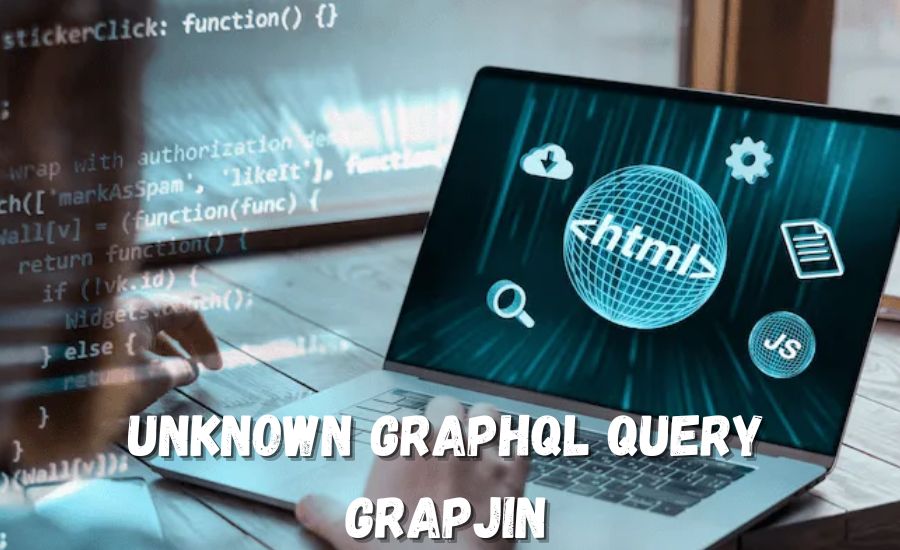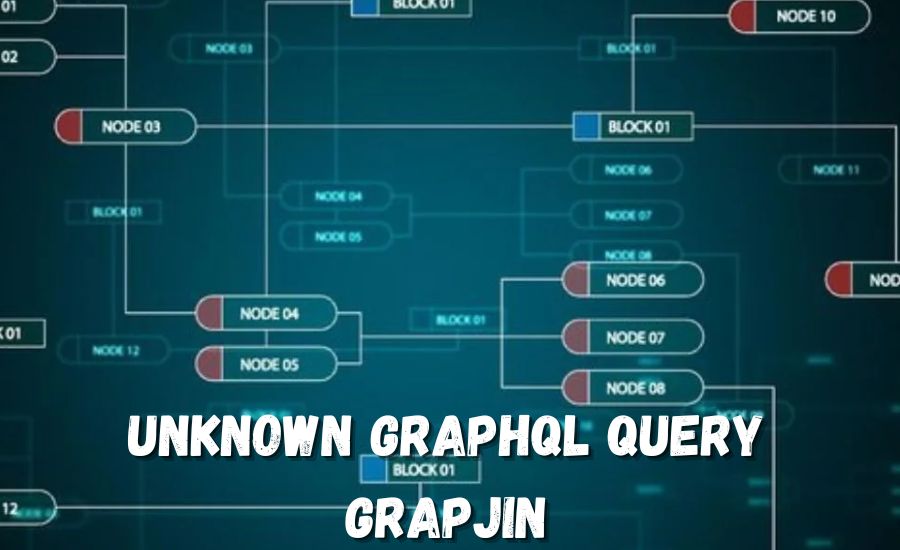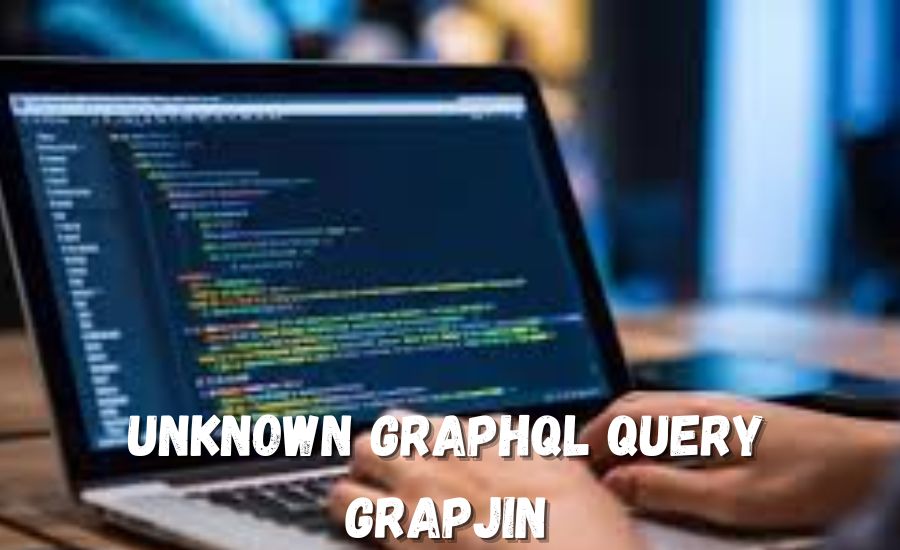When you hear about the “unknown GraphQL query Grapjin,” it might sound like a new, exciting tool in the world of web development. Unknown GraphQL query Grapjin promises to make querying data even more effective than before. This fresh take on the classic GraphQL might sound mysterious, but it’s generating a lot of buzz in the tech world.
In this blog post, we’ll explore what makes the unknown GraphQL query Grapjin special and why it could be a game-changer. We’ll also dive into some potential challenges and tips for using Grapjin effectively. Get ready to discover why this tool is both thrilling and something to approach with care!
What is Grapjin? Uncovering the Mystery Behind the Unknown GraphQL Query
Grapjin is a tool that works with GraphQL, a technology used to get data from servers. Unknown GraphQL query Grapjin is its special way of helping you ask for data more efficiently. It might sound like a mystery, but it’s designed to make getting and managing data easier.
Think of Grapjin like a superhero for data queries. It takes the usual GraphQL and adds new features. This means you can get the information you need faster and with fewer errors. By using Grapjin, you might find that handling data becomes much smoother and simpler.
Using unknown GraphQL query Grapjin can help developers be more productive. It’s designed to solve problems that come up with regular GraphQL queries. If you’re curious about how it works, keep reading to discover more about its features and benefits.
How the Unknown GraphQL Query Grapjin Transforms Data Querying
The unknown GraphQL query Grapjin changes how we work with data queries. It introduces new ways to make asking for data easier and more precise. For example, Grapjin might help you get only the exact data you need without extra information.
Imagine trying to find a toy in a big toy store. Grapjin helps you go straight to the toy section you need. This makes searching for data much faster. By using Grapjin, developers can save time and avoid mistakes in their queries.
Another way Grapjin transforms data querying is by improving how data is organized. It helps ensure that the information you get is well-structured and useful. This means you spend less time fixing errors and more time working on exciting projects.
Grapjin vs. GraphQL: What’s the Big Difference?
Grapjin vs. GraphQL can be like comparing a new gadget to an older model. GraphQL is the classic tool for asking servers for data, but Grapjin adds new features. Grapjin aims to make queries more powerful and user-friendly.
GraphQL lets you ask for data in a flexible way. It’s great, but sometimes it can be complex. Grapjin takes this idea and improves it. It simplifies some of the more tricky parts of GraphQL, making it easier for everyone to use.
With unknown GraphQL query Grapjin, you get enhancements that can make a big difference. It’s like upgrading from a regular bike to a high-speed racing bike. Both are useful, but Grapjin offers more speed and efficiency for your queries.
The Secret Features of Unknown GraphQL Query Grapjin
The unknown GraphQL query Grapjin has some hidden features that make it stand out. One of these features is its ability to handle complex queries with ease. This means you can ask for complicated data in a simpler way.
Another cool feature is the improved error handling. If something goes wrong with your query, Grapjin helps you find and fix the problem quickly. This makes working with data less frustrating and more enjoyable.
Grapjin also offers better tools for optimizing queries. This means you can get your data faster and with less effort. If you’re looking for a tool that makes querying easier, unknown GraphQL query Grapjin has some great features to explore.
How to Write Your First Grapjin Query: A Simple Guide
Writing your first Grapjin query can be fun and easy. Start by understanding what you need from the data. Think about the specific pieces of information you want to get. This helps you write a clear and focused query.
Next, use the Grapjin syntax to craft your query. The syntax is the set of rules that tells Grapjin how to process your request. Don’t worry if it seems tricky at first. There are many guides and examples to help you get started.
Finally, test your query to make sure it works as expected. This means running the query and checking if you get the right data. With a bit of practice, writing Grapjin queries will become a simple and quick task.
Advanced Grapjin Techniques: Making the Most of Your Queries
When you’re ready to dive deeper, try using advanced Grapjin techniques. These techniques help you get even more out of your queries. For instance, you can use special filters to narrow down your data to exactly what you need.
Another technique is optimizing your queries for better performance. This involves tweaking your queries so they run faster and use fewer resources. With advanced techniques, you can make your data querying even more efficient and powerful.
Experiment with different techniques to find what works best for your needs. As you become more familiar with unknown GraphQL query Grapjin, you’ll discover new ways to improve your queries and get better results.
Common Mistakes with Grapjin Queries and How to Fix Them
When working with Grapjin queries, there are some common mistakes to watch out for. One mistake is not being clear about what data you need. This can lead to queries that don’t return the right information.
Another common issue is using incorrect syntax. If the syntax isn’t right, Grapjin won’t understand your query. Make sure to double-check your syntax and use the right format.
To fix these mistakes, review your queries carefully. Look for any errors or unclear parts and make corrections. With practice and attention to detail, you can avoid these common pitfalls and get the most out of your queries.
How Unknown GraphQL Query Grapjin Handles Real-Time Data
Unknown GraphQL query Grapjin is designed to work well with real-time data. This means it can handle data that changes frequently, like live updates or streaming information. It makes sure you get the most current data without delays.
One way Grapjin manages real-time data is through its efficient querying system. It updates information quickly and accurately, so you always have the latest data. This is especially useful for applications that need real-time updates.
By using Grapjin for real-time data, you can create applications that stay current and responsive. Whether you’re building a chat app or a live feed, Grapjin helps keep your data fresh and up-to-date.
Integrating Grapjin with Your Existing Systems: A Step-by-Step Guide
Integrating Grapjin with your current systems is a straightforward process. Start by understanding how Grapjin fits into your setup. This means knowing what data you want to query and how to connect it with your system.
Next, follow the setup instructions for Grapjin. This usually involves configuring some settings and connecting your data sources. Make sure to test the integration to ensure everything works correctly.
Once integrated, you can begin using Grapjin queries within your system. This lets you take advantage of its features and improvements. With proper integration, Grapjin enhances your existing tools and helps you manage data more efficiently.
Performance Issues in Grapjin: What to Look For and How to Improve

Sometimes, Grapjin queries can face performance issues. One common issue is slow query response times. If queries take too long, it can affect your application’s performance.
To improve performance, start by analyzing your queries. Look for any parts that might be causing delays. You can optimize these queries to run faster and more smoothly.
Another way to boost performance is by using caching. Caching stores data so that it doesn’t need to be queried again immediately. This can significantly reduce load times and improve the overall speed of your application.
Best Practices for Crafting Effective Grapjin Queries
Creating effective Grapjin queries involves following some best practices. First, be clear about what data you need. A well-defined query helps you get the exact information you’re looking for.
Use specific filters and fields in your queries. This helps reduce the amount of data returned and speeds up the process. Avoid requesting unnecessary information that can slow down your query.
Finally, test and refine your queries regularly. Make sure they return the right data and perform well. By following these best practices, you can ensure your Grapjin queries are effective and efficient.
Examples of Grapjin in Action: Simple and Advanced Queries
Here are some examples of Grapjin queries in action. For a simple query, you might ask for a list of users from a database. This query would retrieve basic information like names and email addresses.
For a more advanced query, you could request detailed data from multiple sources. This might include user profiles, recent activities, and more. Advanced queries can combine data in complex ways to provide richer information.
Testing different examples helps you understand how Grapjin works. Experiment with various queries to see how you can get the best results for your needs.
The Future of Data Querying: Grapjin and GraphQL Innovations
The future of data querying looks exciting with Grapjin and GraphQL innovations. New features and improvements are always being developed to make querying more powerful and efficient.
Grapjin is part of this future, bringing new ideas and techniques to the table. It helps make data querying faster and easier, keeping up with the latest technology trends.
As technology continues to advance, expect even more changes and enhancements. Grapjin will likely play a big role in shaping the future of how we interact with data.
Grapjin vs. Other Query Languages: Why It Stands Out
Grapjin vs. other query languages shows why Grapjin is special. Unlike some other languages, Grapjin focuses on making queries easier and more efficient. It offers features that set it apart from the competition.
For instance, Grapjin might provide better error handling and optimization tools. This makes it a strong choice for developers who need reliable and fast queries.
By comparing Grapjin with other languages, you can see its unique benefits. It stands out because of its special features and improvements that make data querying more effective.
Troubleshooting Grapjin: Solving Common Problems
If you encounter issues with Grapjin, troubleshooting can help. One common problem is incorrect query results. Make sure your query is written correctly and that you’re asking for the right data.
Another issue might be slow performance. Check if there are any optimization opportunities. Sometimes, tweaking your query or using caching can improve speed.
If you need more help, consult Grapjin’s documentation or seek advice from others who use the tool. Troubleshooting effectively ensures that you can resolve problems and keep your queries running smoothly.
Optimizing Grapjin Query Performance: Tips and Tricks
Optimizing Grapjin query performance involves a few useful tips and tricks. Start by analyzing your queries to find any parts that may be slowing them down. Look for ways to simplify and speed up your queries.
Using caching is another great tip. It helps store frequently requested data, reducing the need for repeated queries. This can make a big difference in query performance.
Regularly review and update your queries to ensure they are performing at their best. By applying these optimization techniques, you can improve the speed and efficiency of your Grapjin queries.
Exploring Future Updates for Grapjin and What They Mean for You

Keeping up with future updates for Grapjin is important. New features and improvements can bring exciting changes to how you use Grapjin. Staying informed helps you make the most of these updates.
Future updates might include enhanced performance, new tools, or better integration options. These improvements can make data querying even easier and more effective.
By exploring what’s coming next, you can plan how to incorporate new features into your projects. Understanding future updates ensures that you’re always using the best tools available with Grapjin.
Conclusion
In conclusion, unknown GraphQL query Grapjin is a powerful tool that makes asking for data easier and faster. It adds cool features to GraphQL, helping you get the exact information you need without the extra fuss. Whether you’re new to data querying or a pro, Grapjin offers improvements that make working with data a breeze.
As technology keeps evolving, Grapjin will likely get even better. By using it, you’re staying ahead of the curve and making sure your data queries are top-notch. Keep exploring and experimenting with Grapjin, and you’ll find it’s a great addition to your tech toolkit!
FAQ,s
Q: What is Grapjin?
A: Grapjin is a special tool that makes querying data easier and faster, adding cool features to GraphQL.
Q: How does Grapjin differ from GraphQL?
A: Grapjin builds on GraphQL, offering extra features and improvements to make data queries more efficient.
Q: How can I write my first Grapjin query?
A: Start by learning the basics of Grapjin syntax. Follow simple guides or tutorials to create your first query.
Q: What are common mistakes with Grapjin queries?
A: Common mistakes include incorrect syntax or not understanding data structures. Check your queries carefully and use error messages to help.
Q: Will Grapjin get updates in the future?
A: Yes, Grapjin will likely have updates and new features, improving how you work with data. Keep an eye out for news and updates!
If You Want the Latest Blogs, Stay with DenverInsiders

Leave a Reply